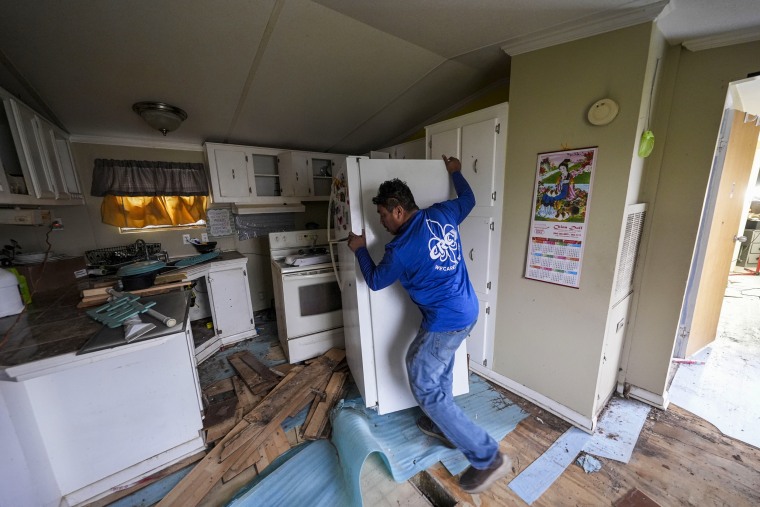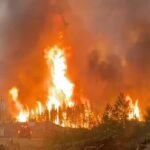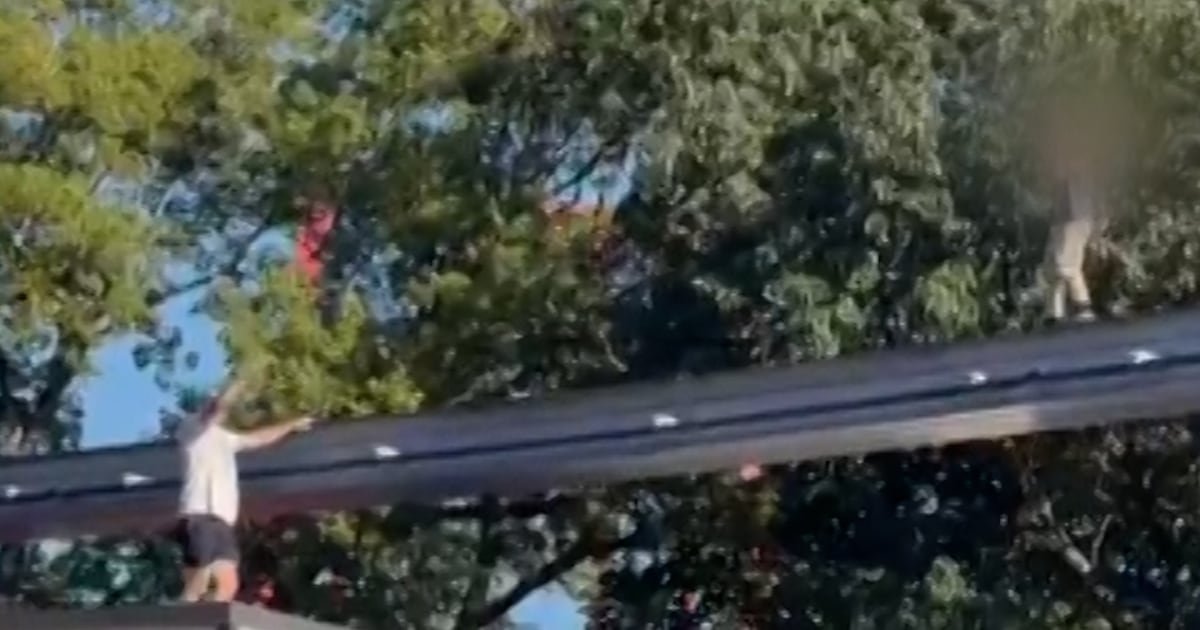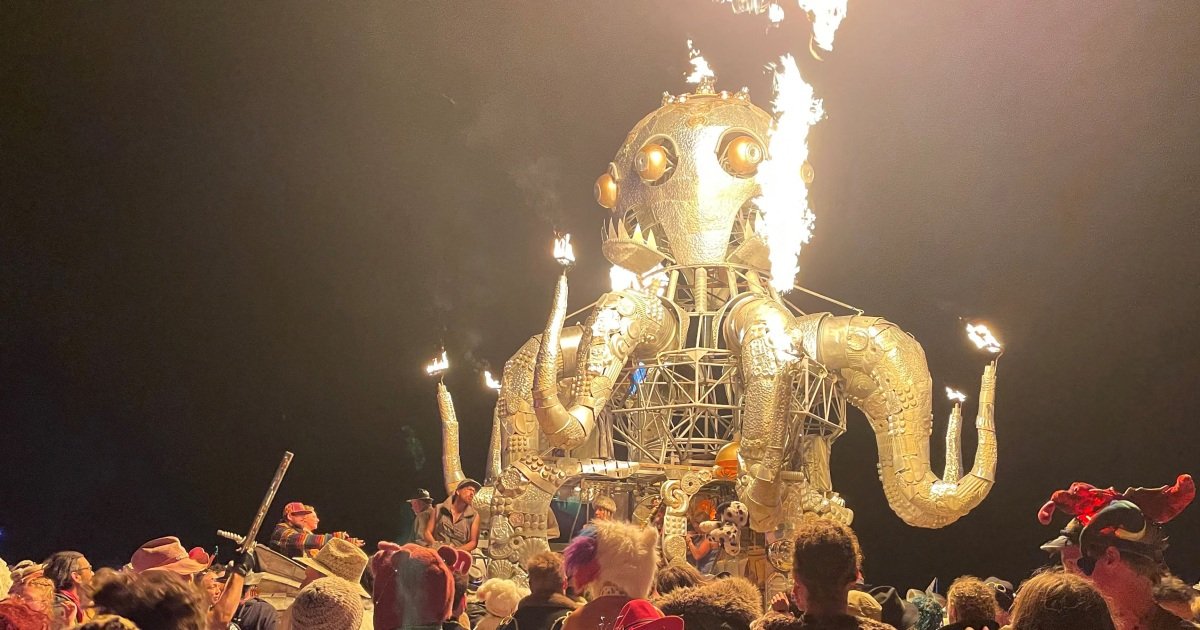LOS ANGELES – As firefighters battled fires in the Los Angeles area this week, Alejandro, a 55-year-old Mexican, was one of several day laborers leading cleanup near burned neighborhoods in Pasadena and Altadena.
Wearing a yellow safety vest, mask and goggles, he helped pick up fallen branches and trees and direct traffic while others worked.
“The country would fall into crisis” without workers like him, said Alejandro, who spoke in Spanish and asked that his last name not be used because he is in the country illegally.
“It wasn’t just a (house),” Alejandro added. “There were thousands.”
When President-elect Donald Trump returns to the White House next week, he has said he plans to deport millions of immigrants who are in the country illegally. Immigrant advocates say that could affect the United States’ ability to rebuild quickly after extensive damage from floods, hurricanes, fires and other disasters.
As the number of extreme weather events exacerbated by climate change increases, there is a growing workforce, many of them without legal status. Some travel the country after extreme weather events, helping to rebuild entire communities. Many are highly skilled electricians, plumbers and bricklayers. Others perform manual labor, such as cutting and removing fallen trees and branches.
“The fact is that the people rebuilding those areas, from the Palisades to Malibu to Altadena, are immigrant construction crews,” said Pablo Alvarado, co-executive director of the National Day Labor Organizing Network. “They are the second responders.”
In 2023, the United States was hit by 28 climate disasters, each exceeding $1 billion in damages, the most ever recorded, according to the National Oceanic and Atmospheric Administration. While it is too early to know the cost of the wildfires in Los Angeles, an initial estimate from AccuWeather puts the damage and economic losses at between $250 billion and $275 billion.
Trump has called climate change “a hoax” and during his campaign accused immigrants of taking “black jobs” and “Hispanic jobs.” Data show that immigrant labor contributes to economic growth and provides advancement opportunities for American-born workers.
Karoline Leavitt, a spokeswoman for Trump’s transition team, told The Associated Press in a statement that Trump “will use all federal powers and coordinate with state authorities” to deport “illegal criminals, drug traffickers and human traffickers… and at the same time reduce costs.” for families and strengthen our workforce.”
The disaster restoration industry boomed following Hurricane Katrina in 2005, which transformed the Gulf Coast into one of the largest construction sites in the world. Many family-owned construction companies grew larger and consolidated. Some were eventually bought by private equity companies that saw a highly profitable industry with money coming in from insurance companies and the Federal Emergency Management Agency.
Mario Mendoza has worked in disaster restoration since Katrina. Just days after the storm, Mendoza was cleaning mud-covered homes and businesses, removing debris, demolishing walls and ripping up floors, some containing asbestos.
Mendoza, a 54-year-old Honduran worker in the country without legal status, recalled seeing bodies in houses he was hired to clean. Some employers refused to pay him. In the years since Katrina, it has helped Louisiana communities rebuild after tornadoes and hurricanes.
“We have been the support line for cities after disasters,” he said, speaking in Spanish.
After disasters, residents, contractors or subcontractors hire workers to tear down moldy walls damaged by floods, or tarp and repair roofs and windows torn off by high winds. They remove debris and felled trees from people’s homes and clogged streets and roads. Then they rebuild. Those without legal status are vulnerable to exploitation and wage theft. They sleep in vans or tents, sometimes on the floor of parking lots or in the destroyed houses they are rebuilding. They are roofers, carpenters, tilers and laborers.

Day laborers hired to clean homes often don’t have protective equipment or safety training, exposing them to “severely hazardous materials” and hazardous environments, said Jessica Martinez, executive director of the National Council for Occupational Safety and Health, a network of workers organizations that have trained workers in post-hurricane recovery. He added that Trump’s anti-immigrant rhetoric also discourages workers from asking for basic resources because they fear being attacked and deported.
According to the U.S. Bureau of Labor Statistics, about 10.8 million people worked in the construction industry in 2020. The Center for American Progress estimates that nearly 1.6 million immigrants who worked in construction in 2021 (a workforce in which Latinos are overrepresented) were in the country illegally. The numbers are higher in states like Texas and California.
In addition to workers already in the United States, each year tens of thousands of people legally acquire H-2B visas, which allow them to temporarily enter the country to perform non-agricultural work. Construction is one of the industries with a high prevalence of H-2B workers.
Stan Marek, chief executive of construction company Marek Brothers, said mass deportations would significantly hamper cleanup and rebuilding efforts after disasters, and that contractors would struggle to complete existing and future projects.
“If you don’t have the people, you can’t fix it,” said Marek, a Republican. “We still haven’t solved everything that happened with (Hurricane) Harvey, which happened years ago. “Some people’s roofs are still sagging, falling down.”
The United States also has a housing shortage, raising questions about how the Trump administration will address that situation with fewer construction workers. In an interview with the New York Times last year, Vice President-elect JD Vance said construction workers without legal status could be replaced by the millions of “prime-age” men and women who have left the workforce. He also said they could be convinced to join the business by paying them higher salaries.
Florida offers a glimpse of the possible effect of any major deportations that come. After Hurricane Idalia hit the Big Bend region in August 2023, some workers without legal status were too afraid to finish recovery work that had begun due to a Florida immigration law that went into effect in July. One of the strictest in the country, it requires companies that employ 25 or more people to verify the legal status of their workers, among other things.
“A lot of the workers I know didn’t want to take the risk of staying there,” said Saket Soni, executive director of the nonprofit Resilience Force, which advocates for the growing group of disaster restoration workers. “They wanted to finish the job, but they couldn’t risk being deported. “So they left their tools and left.”
Sergio Chavez, a sociology professor at Rice University who is writing a book about the disaster recovery industry, sees some alternatives to fill a potential construction labor shortage: Or Trump will have to expand the H-worker program. 2B or hire Americans to do it. work for a higher salary.
But Marek is not convinced. “Everyone says pay them more. “We have tried to pay them more,” he said. “Our starting salaries are higher than ever. And they would rather go to work at Buc-ee’s,” referring to the travel retail chain.









